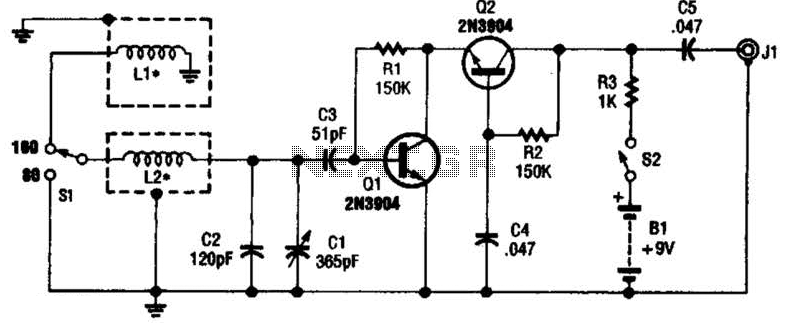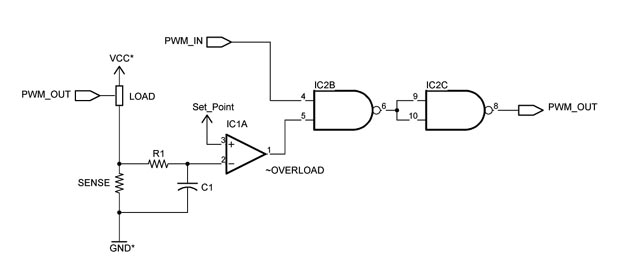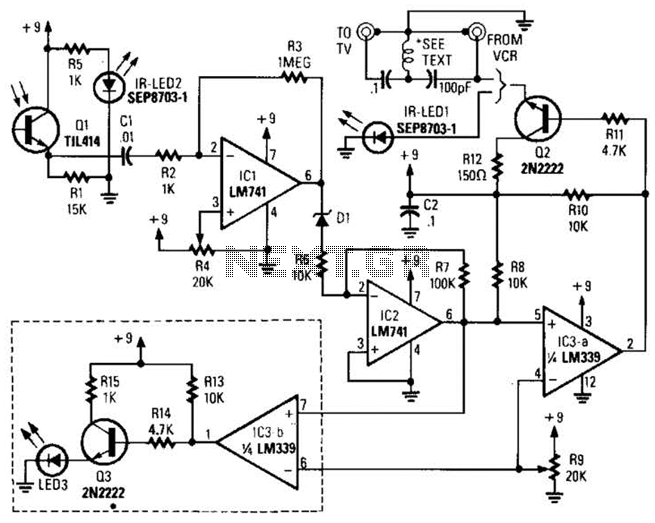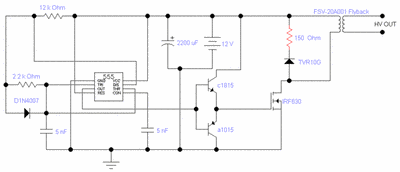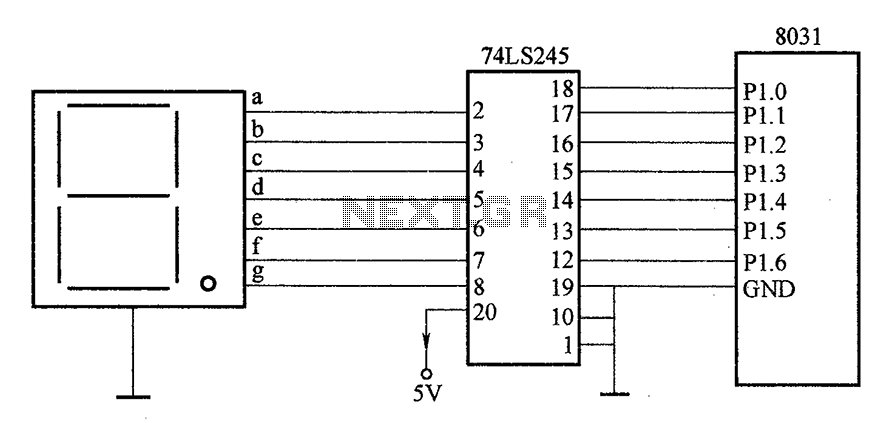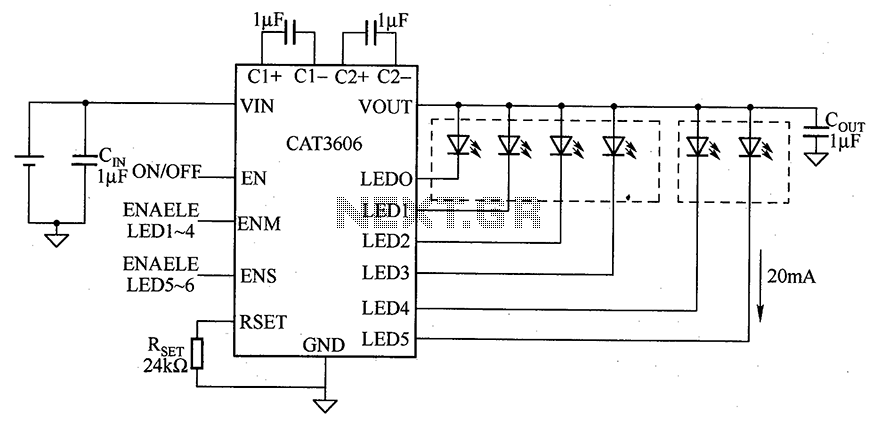
Based on the LT3755 50W white LED headlight drive circuit diagram
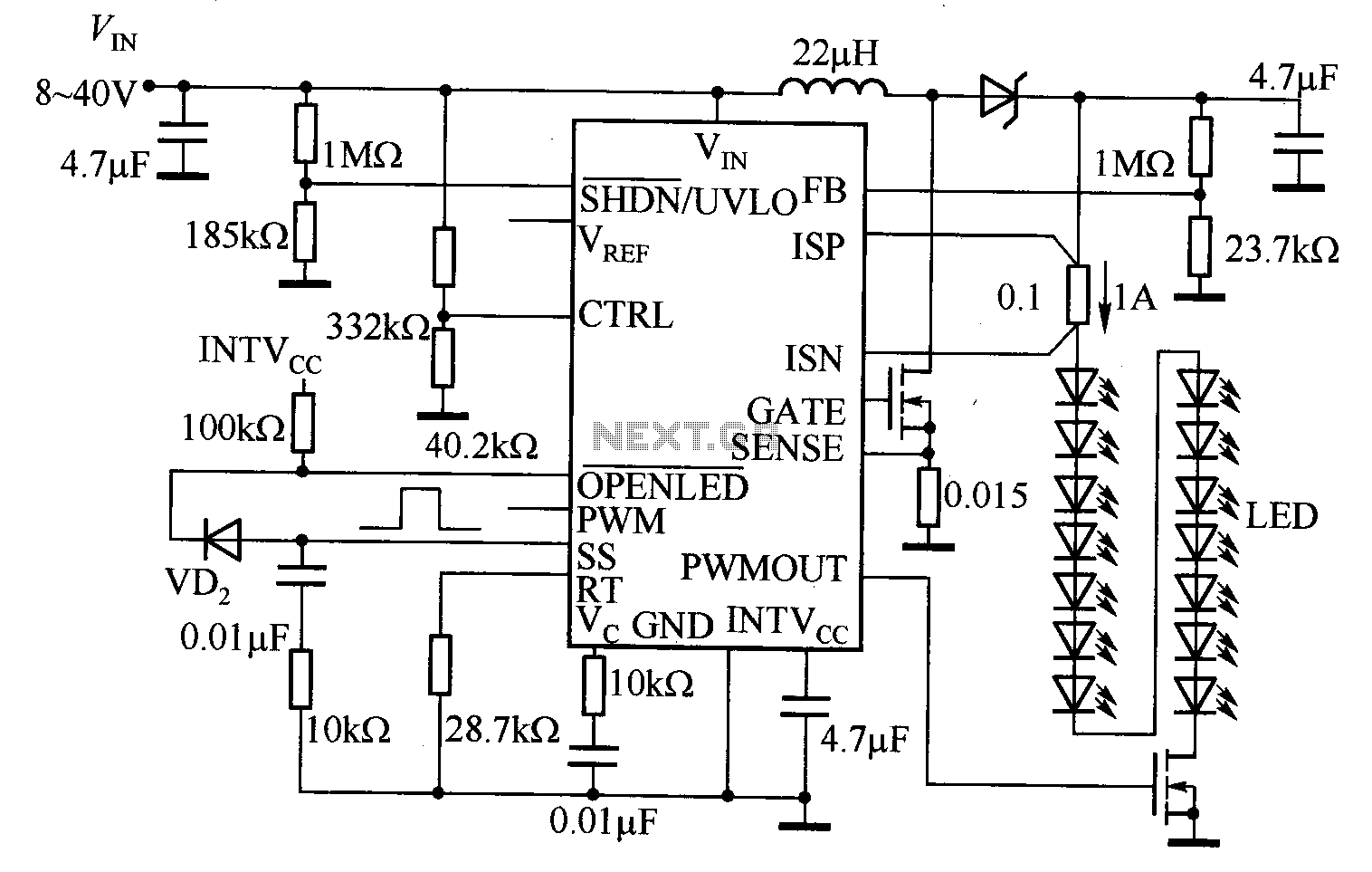
The LT3755 is utilized for high-side current sensing in LED strings, enabling flexible programming and control. It supports a PWM input that allows for a dimming ratio of up to 3000:1, while the CTRL input offers additional analog dimming capabilities. The LT3755 is available in a 16-pin (3mm x 3mm) QFN package and MSOP. Key technical specifications include: (1) a wide input voltage range of 4.5V to 40V, (2) output voltages reaching up to 75V, (3) the ability to provide both constant current and constant voltage regulation, (4) a high-side current sense of 100mV, (5) compatibility with various topologies including boost, buck, buck-boost, SEPIC, or flyback for LED driving, (6) programmable hysteresis undervoltage lockout protection for open LED conditions, (7) an Open LED Status pin, (8) a PWM disconnect switch driver, (9) an analog dimming function via the CTRL pin, (10) low shutdown current of less than 1µA, and (11) programmable soft-start functionality.
The LT3755 integrates advanced features for LED driving applications, ensuring efficient performance and flexibility in various circuit configurations. The high-side current sensing capability allows for precise current regulation, which is critical for maintaining LED longevity and performance. The PWM input enables extensive dimming control, making it suitable for applications requiring varying brightness levels, such as in architectural or automotive lighting.
The device's wide input voltage range from 4.5V to 40V allows it to function in diverse power supply environments, while the output voltage capability of up to 75V facilitates driving multiple LED configurations in series. Constant current and constant voltage regulation ensure that the LEDs operate within their specified parameters, preventing overcurrent conditions that could lead to failure.
The 100mV high-side current sense feature is particularly advantageous, as it minimizes the power loss associated with current sensing while providing accurate feedback for regulation. The versatility of the LT3755 is further enhanced by its ability to support various topologies, including buck, boost, buck-boost, SEPIC, and flyback, allowing designers to choose the most suitable circuit architecture based on their specific application requirements.
The programmable hysteresis undervoltage lockout protection is a critical safety feature that prevents damage to the LEDs in the event of an open LED condition. The Open LED Status pin provides a convenient method for monitoring the status of the LED string, facilitating fault detection and system diagnostics.
Moreover, the PWM disconnect switch driver allows for efficient control of the LED string during dimming operations, while the CTRL pin's analog dimming function provides an additional layer of flexibility in brightness control. The low shutdown current of less than 1µA ensures minimal power consumption when the device is not in active operation, making it suitable for battery-powered applications. Finally, the programmable soft-start feature helps in reducing inrush current during startup, thereby enhancing the reliability of the overall system.
In summary, the LT3755 is a highly versatile and efficient LED driver IC that meets the demanding requirements of modern lighting applications, combining advanced features with robust performance in a compact package.LT3755 in the LED string high side sensing output current, high-side current sensing is used to drive the LED's most flexible program, PWM input provides up to 3000: 1 dimming ratio, and the CTRL input provides additional analog dimming light capability. LT3755 16-pin (3mm 3mm) QFN package and MS0P. LT3755 main technical characteristics are as follows: (1) Wide input voltage range (4.5 ~ 40V). (2) output voltages up to 75V. (3) thereupon constant current and constant voltage regulation. (4) 100mV High Side Current Sense. (5) can boost, buck, buck - boost, SEPIC or flyback topology to drive the LED. (6) having an open LED, programmable hysteresis undervoltage lockout protection. (7) Open LED Status pin. (8) PWM Disconnect Switch Driver. (9) CTRL pin provides analog dimming function. (10) Low Shutdown Current: <1uA. (11) programmable soft-start.
The LT3755 integrates advanced features for LED driving applications, ensuring efficient performance and flexibility in various circuit configurations. The high-side current sensing capability allows for precise current regulation, which is critical for maintaining LED longevity and performance. The PWM input enables extensive dimming control, making it suitable for applications requiring varying brightness levels, such as in architectural or automotive lighting.
The device's wide input voltage range from 4.5V to 40V allows it to function in diverse power supply environments, while the output voltage capability of up to 75V facilitates driving multiple LED configurations in series. Constant current and constant voltage regulation ensure that the LEDs operate within their specified parameters, preventing overcurrent conditions that could lead to failure.
The 100mV high-side current sense feature is particularly advantageous, as it minimizes the power loss associated with current sensing while providing accurate feedback for regulation. The versatility of the LT3755 is further enhanced by its ability to support various topologies, including buck, boost, buck-boost, SEPIC, and flyback, allowing designers to choose the most suitable circuit architecture based on their specific application requirements.
The programmable hysteresis undervoltage lockout protection is a critical safety feature that prevents damage to the LEDs in the event of an open LED condition. The Open LED Status pin provides a convenient method for monitoring the status of the LED string, facilitating fault detection and system diagnostics.
Moreover, the PWM disconnect switch driver allows for efficient control of the LED string during dimming operations, while the CTRL pin's analog dimming function provides an additional layer of flexibility in brightness control. The low shutdown current of less than 1µA ensures minimal power consumption when the device is not in active operation, making it suitable for battery-powered applications. Finally, the programmable soft-start feature helps in reducing inrush current during startup, thereby enhancing the reliability of the overall system.
In summary, the LT3755 is a highly versatile and efficient LED driver IC that meets the demanding requirements of modern lighting applications, combining advanced features with robust performance in a compact package.LT3755 in the LED string high side sensing output current, high-side current sensing is used to drive the LED's most flexible program, PWM input provides up to 3000: 1 dimming ratio, and the CTRL input provides additional analog dimming light capability. LT3755 16-pin (3mm 3mm) QFN package and MS0P. LT3755 main technical characteristics are as follows: (1) Wide input voltage range (4.5 ~ 40V). (2) output voltages up to 75V. (3) thereupon constant current and constant voltage regulation. (4) 100mV High Side Current Sense. (5) can boost, buck, buck - boost, SEPIC or flyback topology to drive the LED. (6) having an open LED, programmable hysteresis undervoltage lockout protection. (7) Open LED Status pin. (8) PWM Disconnect Switch Driver. (9) CTRL pin provides analog dimming function. (10) Low Shutdown Current: <1uA. (11) programmable soft-start.
